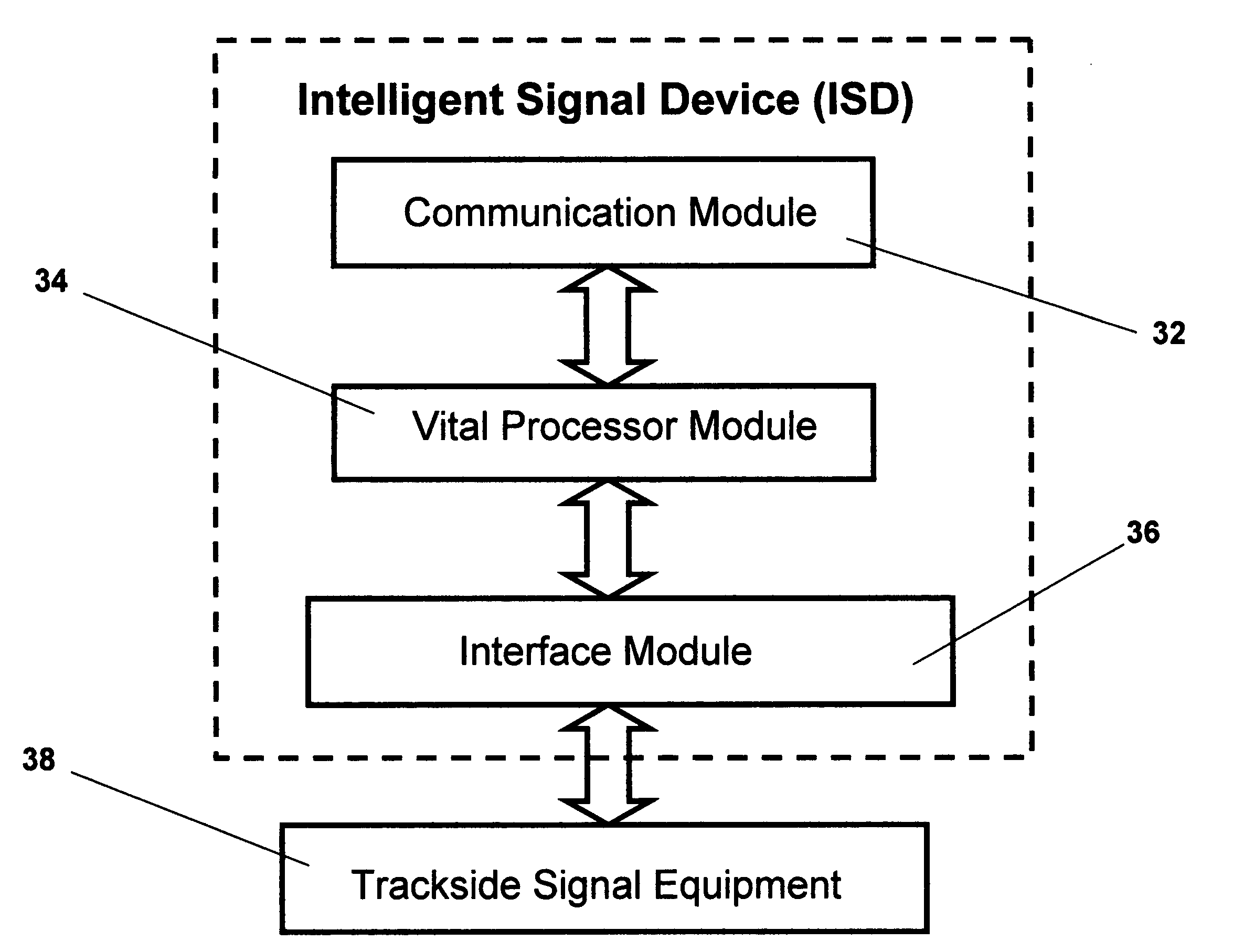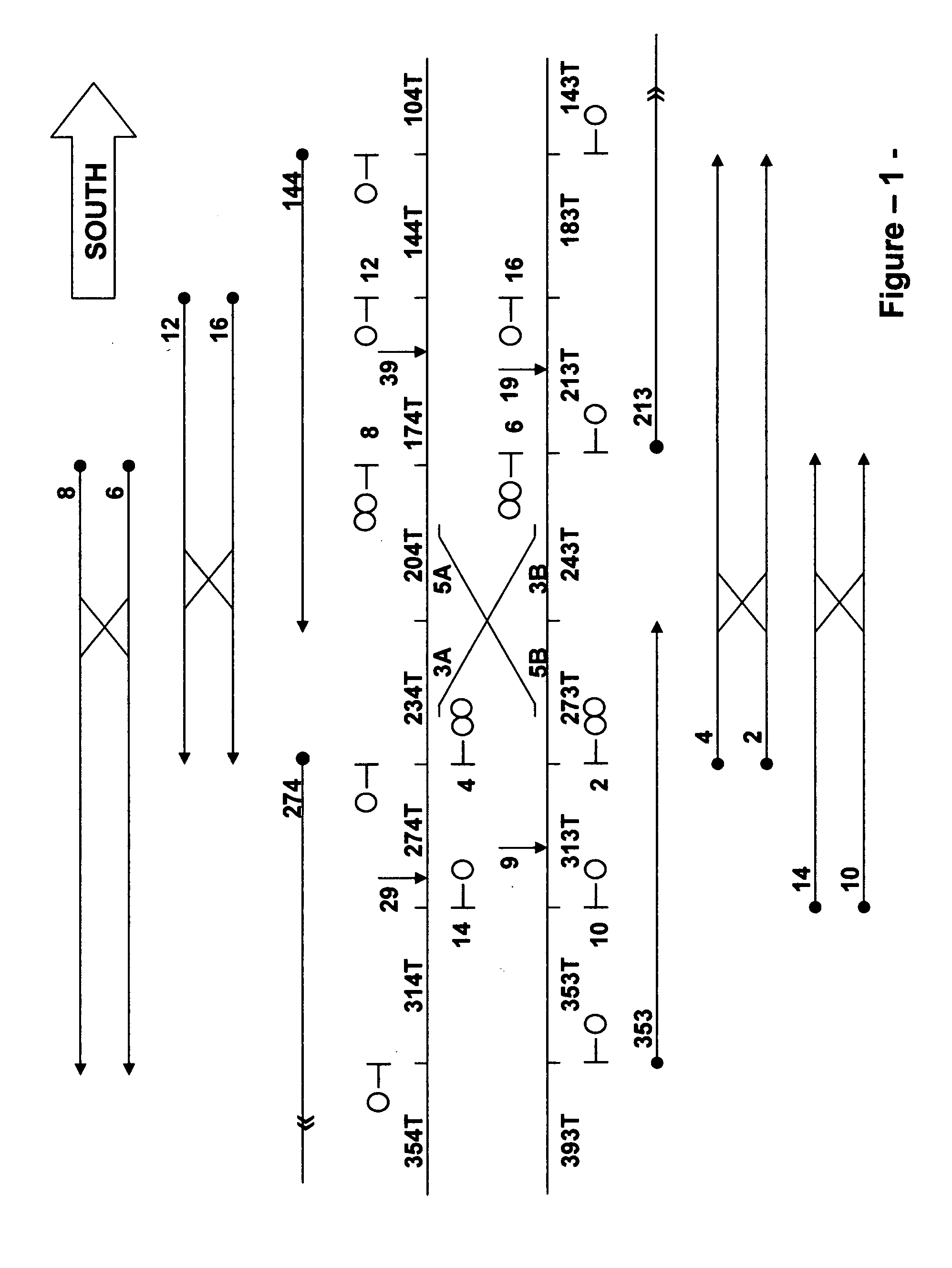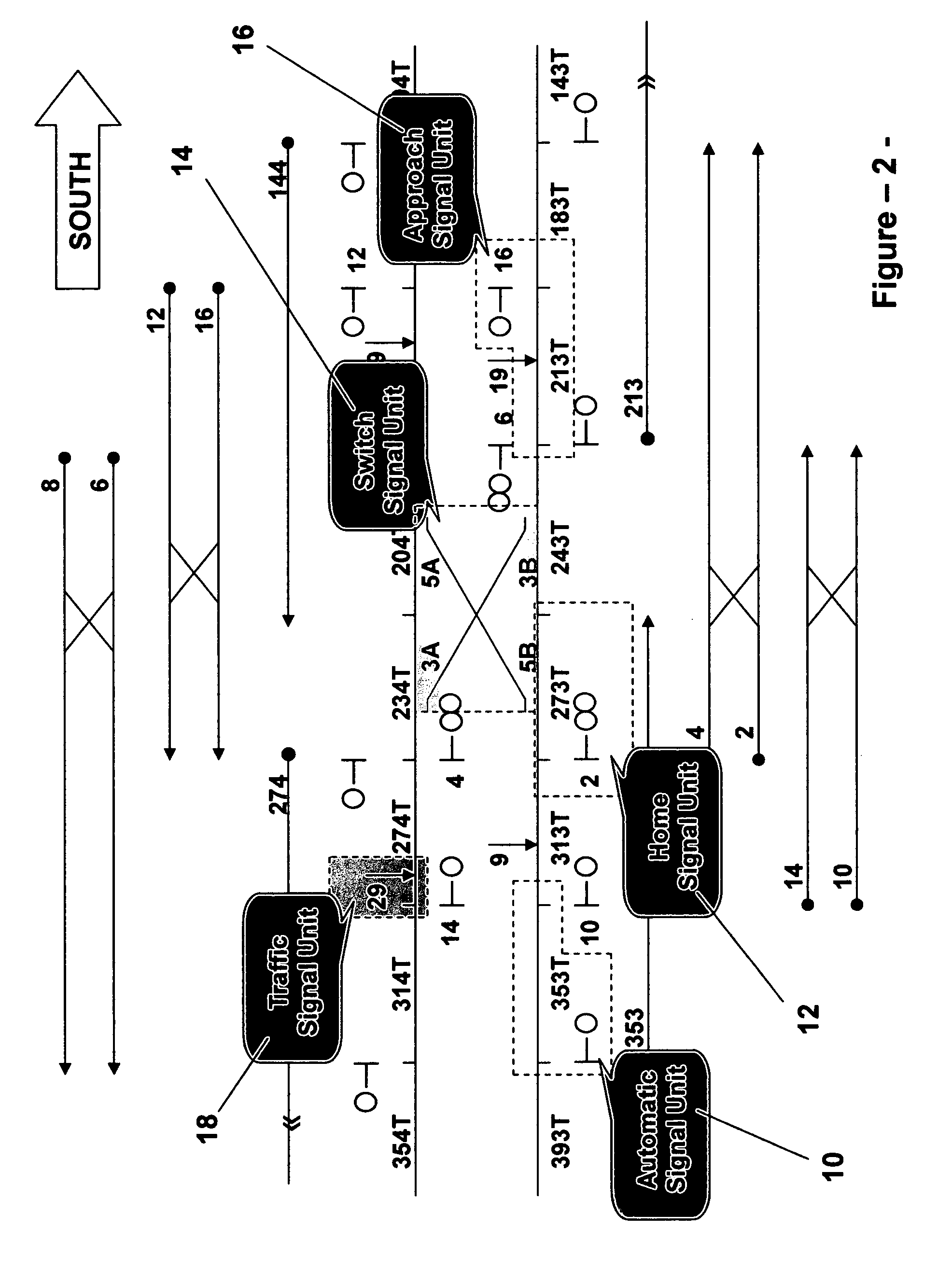Method & apparatus for an interlocking control device
a control device and interlocking technology, applied in the direction of vehicle position/course/altitude control, process and machine control, instruments, etc., can solve the problems of centralized architecture employed by the prior, copper cables are expensive to furnish, install, test and maintain, and copper installations are susceptible to electromagnetic interference, so as to enhance the safety and operational flexibility of train operation, enhance the safety of automatic signals, and enhance the effect of safety and operational flexibility
- Summary
- Abstract
- Description
- Claims
- Application Information
AI Technical Summary
Benefits of technology
Problems solved by technology
Method used
Image
Examples
Embodiment Construction
[0111]The preferred embodiment of the present invention provides a structure, or a process to control interlocking devices, and to control the safe operation of trains over sections of signaled track territory. For a typical interlocking installation that includes at least one track switch, a plurality of wayside signals and associated stop mechanisms (for transit application), and a plurality of detection blocks, the current invention configures the interlocking elements into a plurality of signal units, each of which has an independent vital control device. These vital control devices are interconnected by a data network that manages the data exchanges between the devices. Unlike a conventional interlocking that employs centralized control logic, the current invention segregates the interlocking control logic by type of interlocking element.
[0112]For example, in a typical interlocking configuration the control logic for track switch machines, home signals, approach signals, automa...
PUM
 Login to View More
Login to View More Abstract
Description
Claims
Application Information
 Login to View More
Login to View More - R&D
- Intellectual Property
- Life Sciences
- Materials
- Tech Scout
- Unparalleled Data Quality
- Higher Quality Content
- 60% Fewer Hallucinations
Browse by: Latest US Patents, China's latest patents, Technical Efficacy Thesaurus, Application Domain, Technology Topic, Popular Technical Reports.
© 2025 PatSnap. All rights reserved.Legal|Privacy policy|Modern Slavery Act Transparency Statement|Sitemap|About US| Contact US: help@patsnap.com



